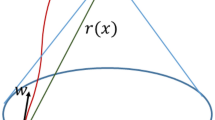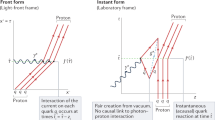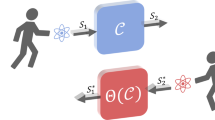Abstract
THE world—or space-time—is a four-dimensional continuum, and consequently offers a choice of a great many directions in which we might start off to look for an end; and it is by no means easy to describe “from the standpoint of mathematical physics” the direction in which I intend to go. I have therefore to examine at some length the preliminary question, Which end?
This is a preview of subscription content, access via your institution
Access options
Subscribe to this journal
Receive 51 print issues and online access
$199.00 per year
only $3.90 per issue
Buy this article
- Purchase on Springer Link
- Instant access to full article PDF
Prices may be subject to local taxes which are calculated during checkout
Similar content being viewed by others
Rights and permissions
About this article
Cite this article
EDDINGTON, A. The End of the World: from the Standpoint of Mathematical Physics*. Nature 127, 447–453 (1931). https://doi.org/10.1038/127447a0
Issue Date:
DOI: https://doi.org/10.1038/127447a0
Comments
By submitting a comment you agree to abide by our Terms and Community Guidelines. If you find something abusive or that does not comply with our terms or guidelines please flag it as inappropriate.



